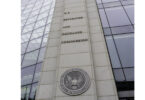For almost a month, 13 Russian commercial banks have been piloting a digital ruble. The Association of Russian Banks (ABD) has predicted the launch of the new central bank digital currency (CBDC) could lead to a 0.5% increase in interest rates for borrowers.
Although the use of the digital ruble is currently restricted, the Bank of Russia has proposed a conversion limit of 300,000 rubles ($3,170) per month into the digital currency. This volume of deposits flowing out of banks could significantly reduce the supply of private Russian credit. However, Alexey Voylukov, the Vice President of the ABD, told Russian news outlet Izvestia that these projections depend heavily on the rate of take up.
According to Voylukov, on August 1, Russian banks held 95 trillion rubles ($1 trillion), of which just over a third is in current accounts that don’t earn interest. The ADB estimates that around 15% of the current account balance, or 5.4 trillion rubles ($57 billion), will flow into the digital ruble.
The Bank of Russia has previously stated it could make up for deposit shortages by giving banks advances, but any further hike in commercial lending rates would pose yet another challenge to the economy.
However, a digital ruble might also offer significant advantages to Russia and could potentially be used to bypass international sanctions. The exclusion from SWIFT since February 2022 has incurred significant interbank transaction costs, and the central bank recently announced plans to test a cross border CBDC.
Although Russia’s international ties are currently limited, its alliance with China remains unaffected. China is already part of a CBDC cross-border project, MBridge, which includes Hong Kong, Thailand and UAE. If Russia and China were to establish a mutual CBDC transaction system, it would help Russian firms expand their access to international markets.
The interest rate hikes over the last two years have hampered investment and productivity around the world. However the instability of diplomatic ties and the fiscal demands posed by the Ukraine invasion create a time-sensitive degree of complexity for Russian firms.
Whilst most central banks anticipate a slow conversion to digital currencies, as the technology evolves and consumers gradually gain more confidence, the Bank of Russia has suggested widespread domestic usage of the currency could be achieved as early as 2025.






